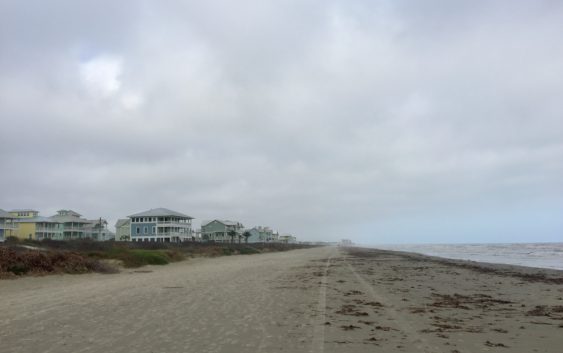- Texas’ biggest wildfire started a year ago. How does the Panhandle look now?
- To her, Hurricane Helene debris isn’t trash. It is full of memories — and she’s returning them
- Bills introduced a year after state’s largest blaze seek to limit wildfires
- A year after Texas’ largest wildfire, Panhandle residents tugged between hope and anxiety
- Another $500M for Hurricane Helene relief in North Carolina passes key hurdle
“Sunny Day” Flooding To Increasingly Threaten Texas Coast

A view of the Gulf Coast in Galveston, TX
A new government report says the Texas coast is increasingly at risk of flooding, even when there’s not a rain cloud in sight.
Sea level rise is projected to cause more flooding from high tides in Texas and across the U.S., according to the report from the National Oceanic and Atmospheric Administration.
The analysis points both to future risk and present-day problems.
“Really the future is now in terms of sea level rise impacts,” William Sweet, a NOAA oceanographer, told NPR. “The ocean is at the brim. It’s clogging storm water systems and it’s spilling into streets.”
The East Coast has felt the impacts more than Texas so far, with high tides there flooding roads and farms. But NOAA’s report notes that high tide flooding is increasingly rapidly in Texas as well.
NOAA researchers expect the western Gulf of Mexico – i.e. the Texas and Louisiana coasts – to see 10 to 20 days of coastal high tide flooding annually by 2030, and anywhere from 65 to 165 days by 2050. The report says those areas will likely see a median of six days of high tide flooding in 2019, a 130% increase from 2000. (The western Gulf saw eight such days in 2018, a year when no hurricanes made landfall in the area.)
On a conference call with reporters Wednesday, Sweet said the threat is growing nationwide.
“Without adaptation, impacts are likely to become chronic sooner than later,” he said.
It’s not just roads that will be increasingly at risk from rising sea levels nationwide; high tide flooding can also overwhelm or damage drainage and sewer systems.
“Annual flood records are expected to be broken again next year and for years and decades to come,” the NOAA report summary reads. “Projecting out to 2030 and 2050 provides vital information for communities who are already taking adaptation steps to address coastal flooding impacts and those who are beginning to assess future flood risk in their communities.”